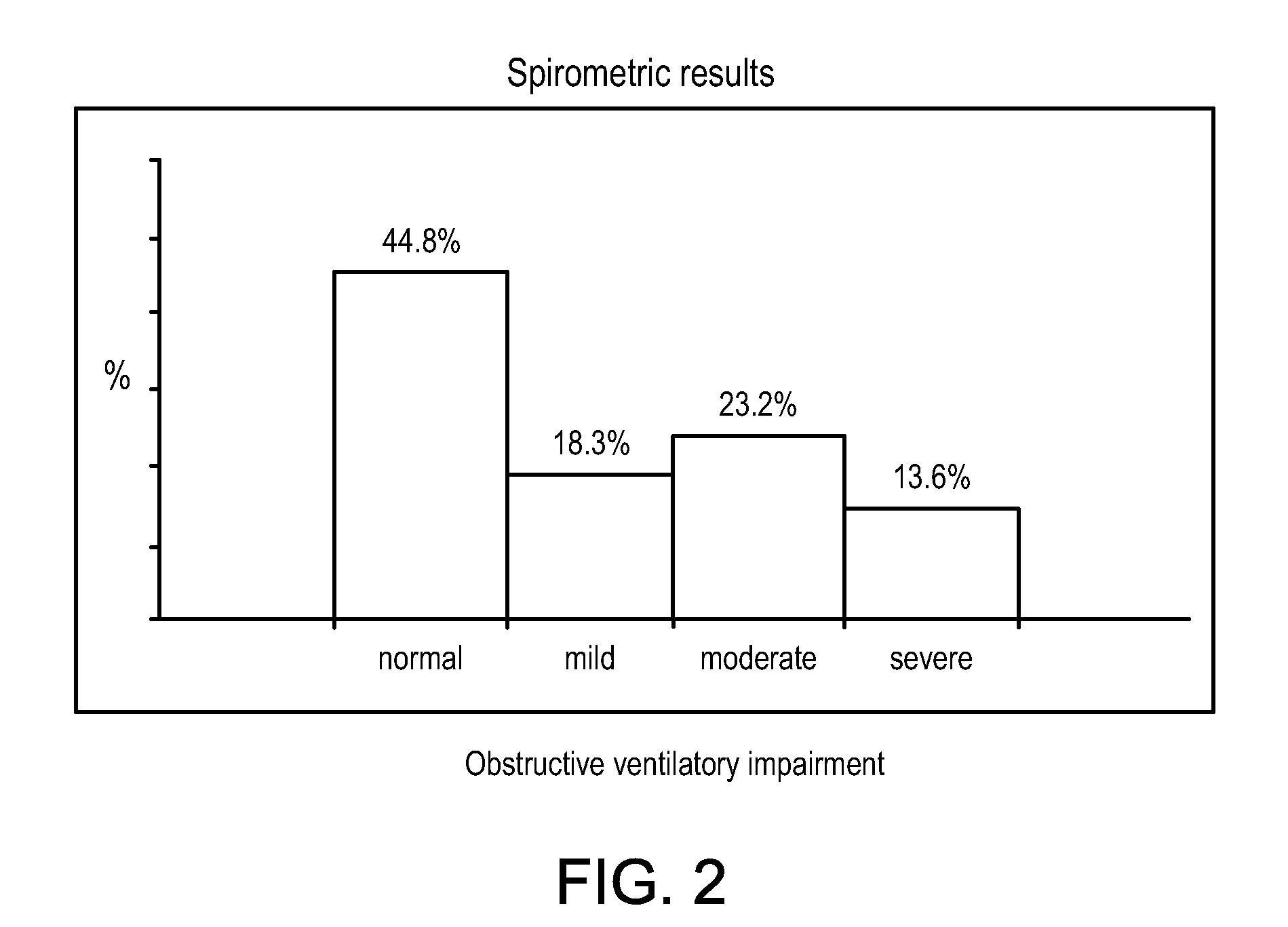Anti-Nicotine Treatment
a nicotine and anti-nicotine technology, applied in the field of anti-nicotine treatment, can solve the problems of nicotine dependence, carcinogens that present a significant health hazard for tobacco users, and the difficulty of smokers quitting smoking, so as to reduce the initial withdrawal symptoms, minimize the long-term relapse rate, and reduce the expression of acetylcholine neurotransmitter
- Summary
- Abstract
- Description
- Claims
- Application Information
AI Technical Summary
Benefits of technology
Problems solved by technology
Method used
Image
Examples
example 1
Treatment of Smokers Using Anticholinergic Therapy
[0095] A group of 724 smokers participated in this treatment program for 22 months; 408 (56.4%) male and 316 (43.6%) female, mean age 46.8 (standard deviation (s.d.) 9.8) yrs., average smoking period 28.2 years (s.d. 15.1) cigarettes / day for a total of 52 pack-years.
[0096] The reasons for smoking cessation varied but the greatest motivating factor was for health reasons in 86.9% of the subjects. (FIG. 1). Previous attempts to quit smoking by other means were made by 79.1% of the participants (Table 3).
TABLE 3Successful attempts forMethodSuccessful attemptsover 3 monthsAcupuncture19.7%4.8%Hypnosis6.4%0.8%Healing19.8%3.1%Nicotine Substitutes17.9%5.2%Psychotherapy6.6%2.3%Self23.3%26.6%
[0097] The test participants were surveyed for prior history of medical problems prior to the study. 27.1% of the participants admitted to having chronic obstructive lung disease of some sort. 13.8% of the participants were hypertensive or had coronary...
example 2
Treatment of Heavy Smokers Using Anticholinergic Therapy
[0103] Some individuals were characterized as heavy smokers and smoked 20 or more cigarettes per day. These individuals have also been treated with the initial anticholinergic therapy as described in Example 1. All of these patients received normal supportive treatment by sedative drugs and counseling on coping with and adjusting to addiction.
[0104] Booster injections were offered to all patients. About 87-90% of these individuals reported that they felt good, no longer smoked, and did not need the booster injection described in Example 1. About 10-13% of the heavy smokers did need a booster injection. A percentage of the heavy smokers reported for various reasons that they were unable to visit the clinic for a booster injection. These individuals were administered tablets of Benztropin misolate (a 2 mg tablet per day), a skin patch containing 1.5 mg of Scopolamine placed on the skin of the back, or a combination of both the ...
PUM
| Property | Measurement | Unit |
|---|---|---|
| blood pressure | aaaaa | aaaaa |
| weight | aaaaa | aaaaa |
| time | aaaaa | aaaaa |
Abstract
Description
Claims
Application Information
 Login to View More
Login to View More - R&D
- Intellectual Property
- Life Sciences
- Materials
- Tech Scout
- Unparalleled Data Quality
- Higher Quality Content
- 60% Fewer Hallucinations
Browse by: Latest US Patents, China's latest patents, Technical Efficacy Thesaurus, Application Domain, Technology Topic, Popular Technical Reports.
© 2025 PatSnap. All rights reserved.Legal|Privacy policy|Modern Slavery Act Transparency Statement|Sitemap|About US| Contact US: help@patsnap.com



